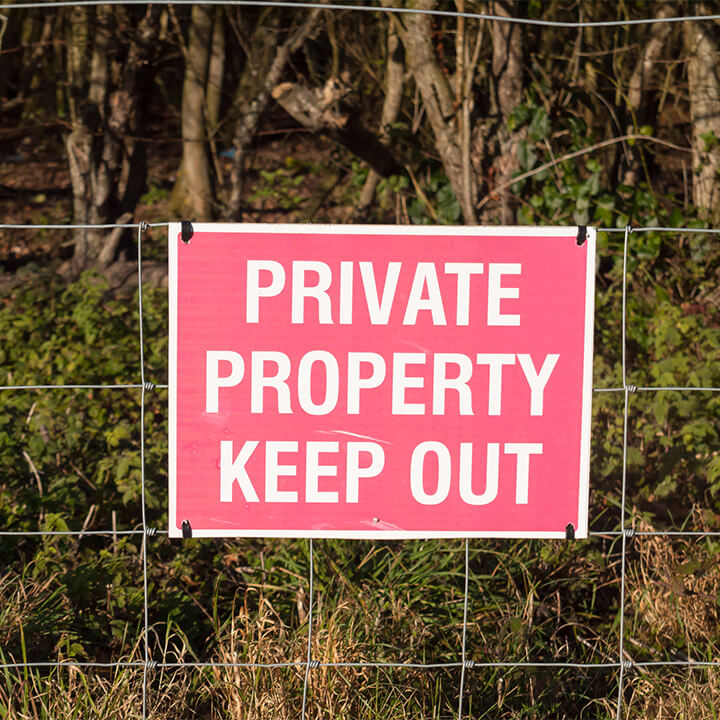Dealing effectively with trespassers: Key lessons from recent cases
27th February 2020
Trespassers can cause nuisance, damage to property, disruption to business and expense. Dealing quickly and effectively with trespassers can therefore be of vital importance. Walker Morris’ Commercial Dispute Resolution specialists Gwendoline Davies highlight helpful guidance to come out of recent case law in this area.
What is the issue?
Many landowners have experienced the nuisance, damage to property, disruption to business and expense of dealing with trespassers. Whether it be travellers setting up encampments or protestors blockading sites or disrupting trading, trespass can cause direct, financial loss for landowners, reputational damage, and it can often have wider social impact for the general public or lawful occupiers who may get caught in the cross-fire.
Dealing quickly and effectively with trespassers (or even acting before the trespass has occurred) can therefore be of vital importance. This is not always straightforward where the identity of any trespassers is unknown (so that they can’t be named in legal proceedings); and/or where, following an eviction, trespassers simply return or relocate to another of the landowner’s sites, very shortly afterwards.
What is the solution?
Fortunately for landowners, a flurry of recent case law in this area offers helpful guidance for those seeking an injunction to remedy the situation, or prevent it from arising in the first place.
An injunction has real “teeth” because it contains a penal notice. That means that if an affected person breaches the injunction, he or she is in contempt of court and can be imprisoned. The courts do not, however, grant injunctions without first undertaking a thorough assessment as to whether they are an appropriate remedy.
Landowners, businesses and their advisers should therefore note all of the following legal and practical lessons to come out of recent trespass case law.
Key lessons from recent trespass case law
Boyd v Ineos Upstream Ltd [2019] EWCA Civ 151 [1]
- There must be a sufficiently real and imminent risk of a wrong being committed to justify quia timet (that is, anticipatory/pre-emptive) injunctive relief.
- For an injunction to be granted against “persons unknown”, it must be impossible for the claimant to name the person[s] likely to commit the wrong; and it must be possible to give effective notice of the injunction.
- The terms of the injunction must correspond to the threatened wrong; they must not be so wide as to prohibit lawful conduct; and they must be clear and precise.
- The injunction should have clear geographical and temporal limits.
Norfolk County Council v Johnstone & Ors [2020] 1 WLUK 36
- Where other forms of enforcement action against trespass [2] have failed and the harm caused is not compensable in damages, an injunction can be awarded.
- The Boyd v Ineos principles apply on the granting of interim injunctions as well as final injunctions.
- So far as the temporal limit of an interim injunction is concerned, that will be a question of fact in each case. An injunction made for too long-a time could be subject to an application to vary. (In the Johnstone case, a three month interim injunction was ordered on the basis that it would give the claimant and the court the opportunity to assess whether injunctive relief was proving successful, and it would give both parties time to prepare for the final injunction hearing [3].)
Canada Goose UK Retail v Persons Unknown [2019] EWHC 2459 (QB)
- Amid the pressure and the practicalities of injunction litigation, parties must not underestimate the importance of getting the legalities and the procedural aspects absolutely right [4].
Cuadrilla Bowland Ltd v Persons Unknown [2020] All ER (D) 105
- So far as the Boyd v Ineos requirement for clarity and precision is concerned, this is particularly important where an injunction is targeted at persons unknown or at those who do not have legal representation.
- If there is any reasonable doubt as to whether a person’s conduct is covered by the injunction, the injunction may be unenforceable and may not be relied upon to establish a finding of contempt of court/imprisonment in the event of breach.
- An injunction term may fail the ‘clear and precise’ test if it is ambiguous, vague or drafted in such opaque, convoluted or technical language that it is not easily understood by its intended recipient.
- Context will also be key to determining the clarity and precision of an injunction term (“words which are clear enough in one factual situation may be unclear in another”).
WM Comment
If you would like any further advice or assistance in dealing with trespassers, please do not hesitate to contact Gwendoline who will be very happy to help.
[1] See our more detailed briefing for further information and advice
[2] such as orders for possession or local authority notices under sections 77 and 78 of the Criminal Justice and Public Order Act 1994, for example
[3] The question of the temporal limit of the injunctions granted in Boyd v Ineos was not addressed in the Court of Appeal’s judgment; and it remains to be seen what temporal limit will ultimately be granted in the Johnstone case. Further guidance from the courts on temporal limits is likely to be ‘one to watch’
[4] See our earlier briefing for further information



